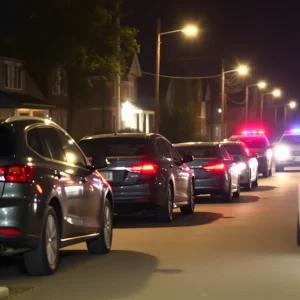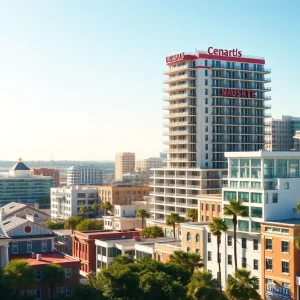Charleston Faces New Educational Challenges: Preparing for the Future
Warm sunshine and a thriving economy are drawing young families and college-bound students to the beautiful city of Charleston, South Carolina. While it might seem like the Palmetto State is bucking national trends affecting higher education, experts warn we can’t afford to ignore simmering challenges on the horizon. It’s an interesting twist of fate—how can a booming local economy still face significant demographic hurdles?
What’s Going On?
The stakes are high. With declining birth rates leading to a shrinking pool of college-aged students, South Carolina’s higher education landscape is about to change. According to the Wall Street Journal, over the past decade, more than 500 colleges and universities across the nation have closed or merged due to a significant enrollment drop—about 2 million students gone in total. And guess what? This trend is expected to worsen starting in 2025.
Rallying Cry for Change
Rising to the occasion, S.C. Governor Henry McMaster has been at the forefront, urging a comprehensive review of the state’s higher education system. He sent a clear message this past summer, emphasizing the need for a $3 million review in the upcoming budget. “Despite high demand for skills and training, many colleges are struggling with enrollments,” he pointed out. Clearly, it’s time to rethink what our colleges are offering to ensure they align with our future workforce requirements.
What Does This Mean for Students?
For students eager to further their education, there’s a silver lining. As more colleges vie for a smaller applicant pool, admission rates are improving. Once daunting institutions have become more welcoming places. For example, acceptance rates in South Carolina’s public colleges and universities have jumped from 55% to 65% since 2017. This is great news for potential applicants, but the higher education landscape remains precarious.
However, it’s important to remember that not every institution can brag about skyrocketing acceptance rates. Notable schools like Clemson and the University of South Carolina have been trickier to get into, as they’ve actually tightened their acceptance reels.
A Lone Wolf in Higher Education
South Carolina’s college system is often described as decentralized or, as some might say, a collection of fiefdoms. This leads to competition for resources but potentially misses the bigger picture. By lacking a more unified governance structure, experts argue we risk falling behind our neighbors, particularly with states like North Carolina, which have more centralized systems that are better equipped to adapt to shifting demographics.
Governor McMaster‘s call for a centralized authority isn’t anything new; past governors have made similar suggestions. Yet, bureaucratic hurdles and strong university influences may make it tough to tackle this topic again.
Looking Ahead: Workforce Development is Key
The state’s commitment to workforce development has intensified, especially with the release of the Unified State Plan for Education and Workforce Development. This extensive report outlines more than 70 crucial occupations that will require post-secondary education to meet future workforce demands. “Knowledge is the fuel that powers South Carolina’s economic engine,” said the president of the S.C. Commission on Higher Education, reiterating the importance of aligning educational pathways with the job market.
In Conclusion
Charleston is basking in the limelight of young, hopeful students, but as challenges loom closer on the horizon, we need to tackle our higher education system thoughtfully and proactively. It’s the right time to ensure that our colleges evolve in ways that truly serve our community’s future.


























